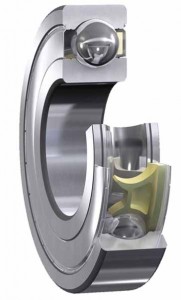 Along with the rest of Indonesian industry, PT. Leuwijaya Utama Textile Company (Leuwitex) was confronted with a Government enforced increase in electricity costs in July 2010. For Leuwitex it meant an increase of approximately 18 per cent.
Along with the rest of Indonesian industry, PT. Leuwijaya Utama Textile Company (Leuwitex) was confronted with a Government enforced increase in electricity costs in July 2010. For Leuwitex it meant an increase of approximately 18 per cent.
For a company with 300 textile weaving machines and 176 twisting machines consuming 2,120 kilowatt hour per month at its Bandung factory, this represented a major increase in operating costs and one that needed a speedy reaction in order to reduce its impact on profitablility.
Immediately after the increases were announced the management of the Leuwitex Bandung factory set about searching for ways to reduce energy consumption. As well as ensuring unnecessary lighting, standby machinery, etc., was switched off and a detailed look taken at production.
The factory, one of the three in Indonesia, produces some of the most sought after fabrics in the country and exports to the Middle East, Malaysia and Europe. Over the years Leuwitex has developed its design and manufacturing techniques to create a range of fabrics, including a lot of custom-made fabric that customers report has exceptional feel, design and wear properties which has placed them among the top 10 producers in Indonesia.
Focus on twisting machines
To produce the daily volume of almost two tons of fabric, the Bandung factory has the usual range of textile machinery, including electric motors, weaving machines, spinning machines and twisting machines, etc. First investigations showed that 30 per cent of the factory’s energy consumption was consumed by twisting machines, an important piece of machinery that is critical to fabric quality. So, in order to avoid electric motor energy losses and optimize frequency converters for the overall electricity supply, energy consumption of the twisting machinery was discussed.
Mechanically these machines are fairly straightforward; a series of lines of high precision spindles are driven by two powerful motors. Frictional losses occur in the rotational motion as these machines operate 24 hours a day, by virtue of the quality of the bearings fitted at the end of each spindle. With 176 twisting machines, each having 256 spindles, this was clearly an opportunity for energy saving.
Meanwhile, Mr. Zenzen, Leuwitex Plant Manager, decided on a very practical and specific way to devise a method to reduce energy consumption for the long term. He would select three of the most likely ways to optimize bearing cost and frictional losses and put them to test in his spindles.
The three potential ‘solutions’ were: new bearings from the supplier of those in the original spindles (not SKF), low cost bearings of local Chinese manufacture, and SKF energy efficient bearings claiming up to 30 per cent friction saving.
Mr. Zenzen fitted the bearings to three separate spindle lines and ran them for three months, monitoring specifically the energy consumption of those three lines. The result was an overwhelming victory for the SKF Energy Efficient bearing, with around 10 per cent total energy savings. Extrapolating this result to the expected lifetime of the spindles would conclusively save energy the most and deliver the lowest total cost of operation.
“Having satisfied myself on the energy savings issue, said Mr. Zenzen, “I needed to also be sure that the overall SKF bearing performance was equally reliable in the spindles that are so critical to the final product quality. The twisting machines have two contra spinning spindles rotating in opposite direction. To maintain product quality it is of utmost importance that these two spindles are rotating exactly as expected through the entire and continuous spinning/twisting operation”.
Extending tests to a production run
So Mr. Zenzen’s next test was to fit SKF Energy Efficient (E2) bearings to 10 twisting machines and begin a ‘production run’. “I was delighted to find that the product quality was exactly the same as before with constant, uniform delivery of the various designs, material thickness and feel. This was especially important because we were in the process of expanding and also replacing some machinery in readiness for a new fabric product, and needed to be sure we could rely on the machinery”.
This initial test was extended by adding more lines of spindles while keeping the original 10 operating. Regular product quality checks among all the machines convinced Mr. Zenzen that he had indeed found his answer to the best bearings for his textile machinery from both energy efficiency and bearing performance points of view.
“I was extremely happy at the outcome of this ‘project’. We took the right amount of time to be sure we had done all that was needed to be certain we had chosen the best solution for our original short-term energy cost problem, and at the same time came to agree that it was equally the correct solution for our long-term plans as well”, he added.
The Leuwitex Bandung factory now has 25.600 SKF Energy Efficient bearings installed on its machinery and are reaping the energy and financial rewards that Mr. Zenzen first envisaged when he started his project.
The E2 deep groove ball bearing is one of the SKF performance class of energy efficient bearings. It reduce frictional losses in a bearing by 30 per cent or more when compared to a comparably sized standard SKF bearing. The performance increase comes from an optimized internal geometry, low-friction grease and a special low-friction polyamide cage. Designed for grease lubricated, light-to-normal load applications, this bearing consumes less lubricant than the comparable SKF Explorer bearings and enable longer bearing service.
All this meant that the number of bearings needed to run an application over its lifetime can be halved. In instances where an application is run-to-failure, these E2 bearings can conceivably outlast other components in the application.
Typical examples of applications for SKF E2 deep groove ball bearings include electric motors, pumps, conveyors, fans, textile spindles, etc.